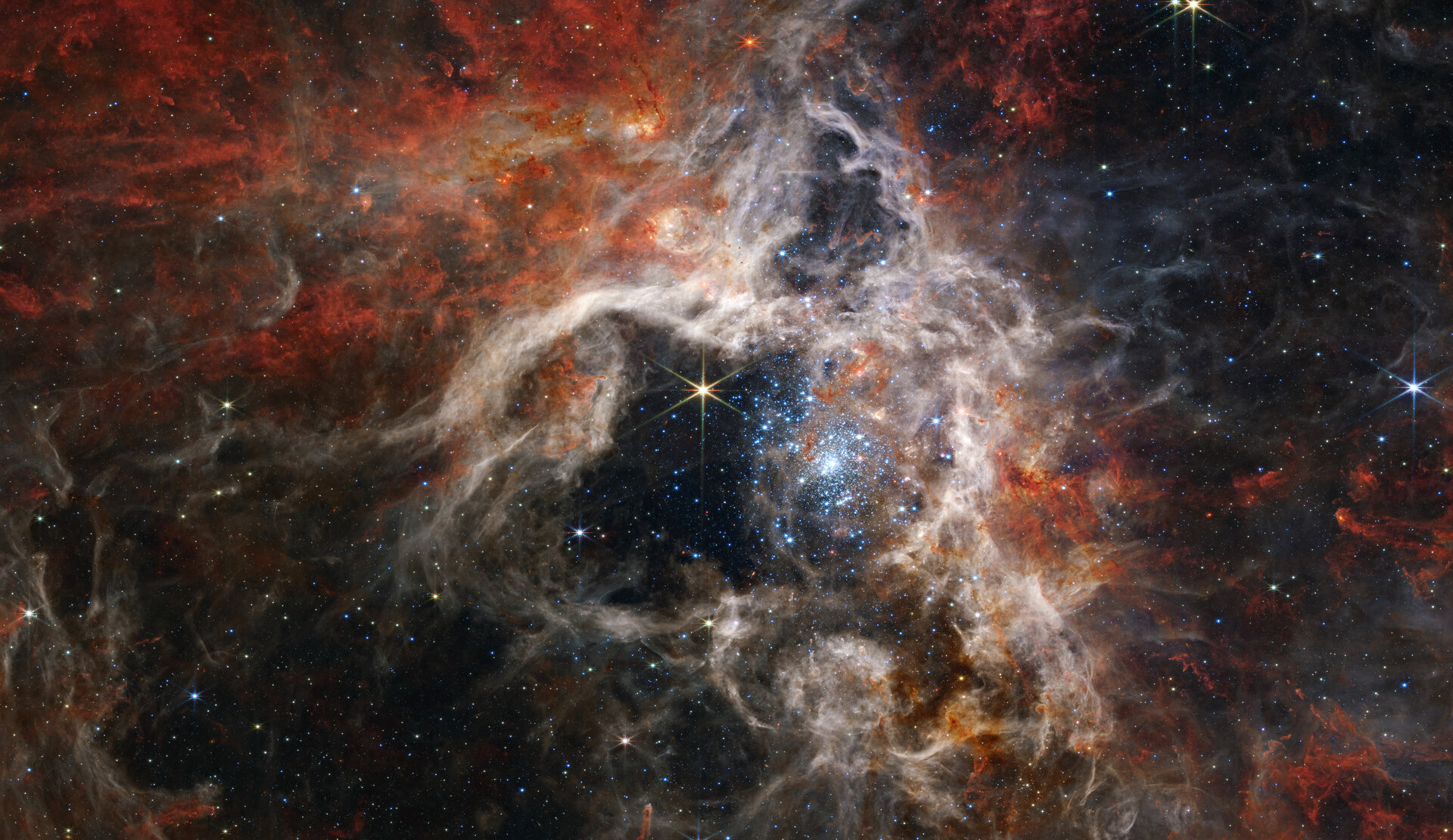Here’s the Tarantula Nebula like we’ve never seen it before. The James Webb Space Telescope turned its detectors towards the Large Magellanic Cloud about 161,000 lightyears away to take a look at 30 Doradus, more commonly known as the Tarantula Nebula. JWST’s exceptional infrared view has now revealed thousands of never-before-seen young stars in this stellar nursery, as well incredible views of the wispy, dusty filaments and the impressive collection of massive older stars.
There is so much detail in this image, if you download the full-sized version, you can pan and zoom around to see details on stars and the surrounding dust and gas. And there are even other, more distant galaxies dotting the background. If you have a big screen, even better, as it takes up over 14,000 x 8,000 pixels. Or, take a look at the video tour, below.
The Tarantula Nebula is the largest and brightest star-forming region in the Local Group, the galaxies nearest to our Milky Way, and therefore has been a popular target for other big telescopes and amateur astronomers in the southern hemisphere. For comparison, here’s a recent mosaic of the Tarantula Nebula from the Hubble Space Telescope:

And here’s a view from amateur astronomer Joseph Brimacombe in Australia:

Even though this nebula has been imaged many times over the years – as well as other beautiful nebulae — astronomers say the star formation process still holds many mysteries – many of them due to our previous inability to get crisp images of what was happening behind the thick clouds of stellar nurseries. With its infrared vision, JWST is now revealing details not seen before. As scientists start to delve into the data, they are learning new insights in to how stars are created.
This nebula resembles a burrowing tarantula’s lair, with the intricate net of nebular dust and gas appearing like the spider’s silk. The nebula’s big cavity in the center has been “hollowed out by blistering radiation from a cluster of massive young stars, which sparkle pale blue in the image,” says the JWST team. “Only the densest surrounding areas of the nebula resist erosion by these stars’ powerful stellar winds, forming pillars that appear to point back toward the cluster. These pillars contain forming protostars, which will eventually emerge from their dusty cocoons and take their turn shaping the nebula.”

Astronomers used JWST’s Near-Infrared Spectrograph (NIRSpec) to able to detect new dust-enshrouded stars, and the Mid-infrared Instrument (MIRI) to reveal a previously unseen cosmic environment, as the longer infrared wavelengths can see further into the gas and dust. You can see a “slider” view of the two images side-by-side to compare the different views.
ESA scientist Mark McCaughrean, part the JWST Science Working Group said on Twitter that this view of the Tarantula was taken as part of the Early Release science observations — the first color images released by the JWST team on July 12 — but this image didn’t “make the cut because there was so much other good stuff to show.”
More information:
ESA

